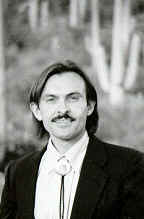"What's that about?" I asked.
"Covering up my sadness," she answered. I was amazed at all the answers she had and at how she continued to eat food that would make her sick despite her seeming level of awareness.
"What's your sadness about?"I asked.
"Coming home to an empty house," she answered. "Having no relationship in my life right now. I eat all the stuff that makes me feel fulfilled and then I get sick." Mary had sophisticated sounding answers to my questions, but they seemed to be rehearsed and to mean relatively little to her except as an explanation. That led me to the idea that our food preferences are socially determined. Some cultures love sweets. Others, not so much. Mary's ideas about food emphasized sweets and also the very real possibility that she could have celiac disease, a problem in which people cannot digest the gluten in wheat and have digestive symptoms in response to eating it. Further interviewing led to the emergence of a more complex relationship with food. Mary didn't want to have celiac disease. She didn't like the idea that she might never be able to eat wheat. She preferred a belief in which she championed over allergies and food intolerances through a variety of alternative healing methods. She also alternated between what sounded to me like an extremely restrictive diet, switching to her indulgences with sweets. How do we understand this?
I suggested to Mary that we needed to understand the stories that made her believe that she deserved sweets and that the deprivation from sweets was a major deprivation. We looked at some cultures in which sweets were less prominent, including India in which rice sweets predominated, or other Asian cultures in which dessert took more the form of fruit. Mary had grown up in a home in which emotional distress was plugged with sweets. I could relate to this, though my grandmother tended to offer a variety of foods to cover up distress. Mary's mother offered food under any particular situation of emotional distress. I suggested to Mary that the simplest solution to her pain was to find a way to change cultures. She could change her story about comfort food. A harder task would be to change the story about food providing comfort, though that could be an eventual goal.
Mary reminded me of a client who had come for a variety of bowel symptoms who only ate "brown" food, consisting of steak (prepared in any number of ways, from chicken fried to broiled), potatoes (mashed, French fried, sautà �ed), and bread. He had experimented with vegetables for a couple months when his dog was terminally ill, thinking that perhaps vegetables could cure his dog. When they didn't, he rejected vegetables as having failed him. His hero, also, was a British power lifter, who claimed to only eat five or six chicken fried steaks per day along with as many chips and gravy as required to accompany the steak. All this was washed down with a brown ale. I asked this client what had happened to the power lifter later in life. "He didn't live that long," came the answer. "He disappeared. Apparently he was taken out by the Brazilian mafia." When my client actually verbalized these stories, he laughed. He had consulted many health care providers who had suggested he change his diet, but none had attempted to find the stories behind his food choices. When he heard himself speak, he decided that maybe he should eat some vegetables. He began by putting V-8 juice in his vodka, but, at least, that was a start.
Mary and I explored what could become her new comfort food. Besides cake and sweets, could she use something else? I asked her to consider what might work for coming home to an empty house after a hard day's work. She responded that sashimi or sushi might work for her. She could pick this up on the way home. She also loved seaweed, prepared Japanese style or Korean. That led to a discussion of the joys of Korean vegetables, which I used to eat for lunch when I worked in Honolulu. We discussed their kim chee, bean sprouts, seaweed, daikon, and other delicacies. When Mary had settled on a set of foods that could substitute for the sweets that she couldn't eat, I proposed we complete our work together for that day with some guided imagery.
After a relaxation induction, I told her a story that suggested that change was desirable and could be had. Then we did a guided imagery (which could also be called hypnosis) about imagining herself feeling empty and driving home and stopping for sushi or sashimi or Korean food, and feeling all the same comfort that she used to derive from the other foods. We envisioned the comfort without the intestinal symptoms. Could she handle comfort without pain, or did she require pain to feel comforted? Could the sweetness of life become more metaphorical? Did it have to be literal and related to gustatory stimuli?
Over time, Mary did change her comfort food and stopped having digestive symptoms. She may now wish to challenge the idea of food as comfort, but, importantly, her digestive symptoms have ended. Once a month, she breaks down and eats her forbidden food, and suffers the next day afterward. Over time, I hope the stories related to this will further week in their influence over her.
The bottomline: if we want people to change their health behaviors, we have to find the underlying stories that make those behaviors make sense. Changing or eroding or challenging those underlying stories is much more powerful than just telling people what to do and getting angry at them when they don't do it.




